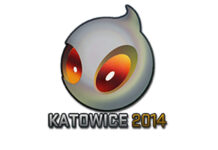In the rapidly evolving digital landscape, user interface (UI) and user experience (UX) design play crucial roles in determining the success of websites and applications. With the increasing demand for personalized digital experiences, the role of a UI/UX custom design company has become more significant than ever. These companies specialize in creating tailored UI/UX designs that not only meet the unique needs of their clients but also incorporate the latest trends and innovations. In this article, we will explore the current trends and innovations in custom UI/UX design, highlighting how they enhance user engagement and satisfaction.
1. Personalization and User-Centric Design
One of the most prominent trends in custom UI/UX design is personalization. Users today expect digital experiences that cater to their individual preferences and behaviors. A UI/UX custom design company employs various techniques, such as user segmentation, behavioral analysis, and AI-driven recommendations, to create personalized experiences. By tailoring content, design elements, and interactions to individual users, companies can significantly enhance engagement and loyalty.
Personalization goes hand-in-hand with user-centric design, which focuses on understanding the needs, motivations, and pain points of users. Through methods like user research, usability testing, and feedback collection, designers can create interfaces that are intuitive and enjoyable to use. The goal is to ensure that the design aligns with user expectations, making the experience as seamless and satisfying as possible.
2. Voice User Interface (VUI)
Voice technology is transforming the way users interact with digital products. Voice user interfaces (VUIs) allow users to interact with systems using natural language, making the experience more accessible and hands-free. A UI/UX custom design company can integrate VUI into websites and applications to enhance usability, particularly for tasks that require multitasking or hands-free operation.
The rise of smart speakers and voice assistants like Amazon Alexa, Google Assistant, and Apple’s Siri has accelerated the adoption of VUI. To stay ahead of the curve, designers are focusing on creating conversational interfaces that can understand and respond to user queries effectively. This involves designing intuitive voice commands, natural language processing (NLP) capabilities, and seamless integration with other UI elements.
3. Augmented Reality (AR) and Virtual Reality (VR)
Augmented reality (AR) and virtual reality (VR) are no longer confined to the realms of gaming and entertainment. These technologies are increasingly being utilized in custom UI/UX design to create immersive and interactive experiences. An innovative UI/UX custom design company leverages AR and VR to enhance various applications, from e-commerce and real estate to education and healthcare.
AR can be used to overlay digital information on the physical world, providing users with a rich, contextual experience. For example, an AR-enabled app can allow users to visualize how furniture would look in their home before making a purchase. On the other hand, VR creates a completely immersive environment, which can be used for virtual tours, training simulations, and more. By integrating AR and VR into their designs, companies can offer unique and engaging experiences that set them apart from competitors.
4. Microinteractions
Microinteractions are subtle, yet impactful, design elements that enhance user engagement and provide feedback. These small animations or responses occur when a user interacts with a UI element, such as clicking a button, filling out a form, or receiving a notification. A UI/UX custom design company incorporates microinteractions to make the user experience more intuitive and enjoyable.
Effective microinteractions serve multiple purposes: they guide users through tasks, provide feedback on actions, enhance the aesthetic appeal of the interface, and reinforce brand identity. For instance, a slight animation when a user adds an item to their cart can make the action feel more satisfying and confirm that the task was completed successfully. By paying attention to these small details, designers can create a more polished and user-friendly experience.
5. Dark Mode
Dark mode has become a popular feature in modern UI/UX design. It offers a sleek, visually appealing alternative to the traditional light mode, reducing eye strain and saving battery life on OLED screens. A UI/UX custom design company often includes dark mode as an option to enhance user comfort, particularly in low-light environments.
Implementing dark mode requires careful consideration of color schemes, contrast ratios, and readability. Designers must ensure that all elements remain clear and accessible, avoiding issues like low contrast or color clashes. Additionally, providing users with the option to toggle between dark and light modes allows for greater personalization and control over their experience.
6. Neumorphism
Neumorphism, a design trend that combines skeuomorphism and flat design, is gaining traction in the UI/UX world. It involves creating UI elements that appear to extrude from the background, giving a soft, realistic, and tactile feel. This style is characterized by subtle shadows, gradients, and highlights that make components look almost 3D.
A UI/UX custom design company might use neumorphism to create interfaces that are visually intriguing and easy to navigate. However, it’s important to strike a balance, as excessive use of this style can lead to usability issues. Ensuring that buttons, icons, and other interactive elements are clearly distinguishable and functional is key to successful implementation.
7. Design Systems and Component Libraries
As digital products become more complex, maintaining consistency and efficiency in design has become crucial. Design systems and component libraries help achieve this by providing a standardized set of guidelines, components, and patterns that can be reused across projects. A UI/UX custom design company often develops and utilizes these systems to streamline the design process and ensure cohesive user experiences.
Design systems encompass various aspects, including typography, color palettes, spacing, and interaction patterns. By adhering to a unified design language, teams can work more collaboratively and produce interfaces that are consistent and scalable. Component libraries, on the other hand, offer pre-built UI elements that can be customized and integrated into different applications, saving time and effort.
8. Accessibility and Inclusive Design
Accessibility and inclusive design are essential considerations in modern UI/UX design. Ensuring that digital products are usable by people with diverse abilities and backgrounds is not only a legal requirement but also a moral responsibility. A UI/UX custom design company prioritizes accessibility by following best practices and guidelines, such as the Web Content Accessibility Guidelines (WCAG).
Inclusive design involves creating interfaces that are flexible and adaptable to different user needs. This includes providing alternative text for images, designing for keyboard navigation, ensuring sufficient color contrast, and supporting screen readers. By making accessibility a core part of the design process, companies can reach a wider audience and create a more equitable digital environment.
9. AI and Machine Learning
Artificial intelligence (AI) and machine learning (ML) are revolutionizing UI/UX design by enabling smarter, more responsive interfaces. These technologies can analyze user behavior, predict preferences, and automate routine tasks, resulting in more personalized and efficient experiences. A UI/UX custom design company leverages AI and ML to enhance various aspects of design, from content recommendations to adaptive interfaces.
For example, AI-driven chatbots can provide instant customer support, while ML algorithms can optimize user journeys by predicting and addressing pain points. By integrating AI and ML into their designs, companies can create more dynamic and intuitive interfaces that continuously evolve based on user interactions.
Conclusion
The field of UI/UX design is constantly evolving, driven by advancements in technology and changing user expectations. A UI/UX custom design company plays a crucial role in staying ahead of these trends and innovations, creating tailored solutions that meet the unique needs of their clients. By embracing personalization, VUI, AR/VR, microinteractions, dark mode, neumorphism, design systems, accessibility, and AI/ML, businesses can deliver exceptional digital experiences that engage and delight users. As the digital landscape continues to evolve, the importance of innovative and user-centric design will only grow, making it essential for companies to stay informed and adaptable.







